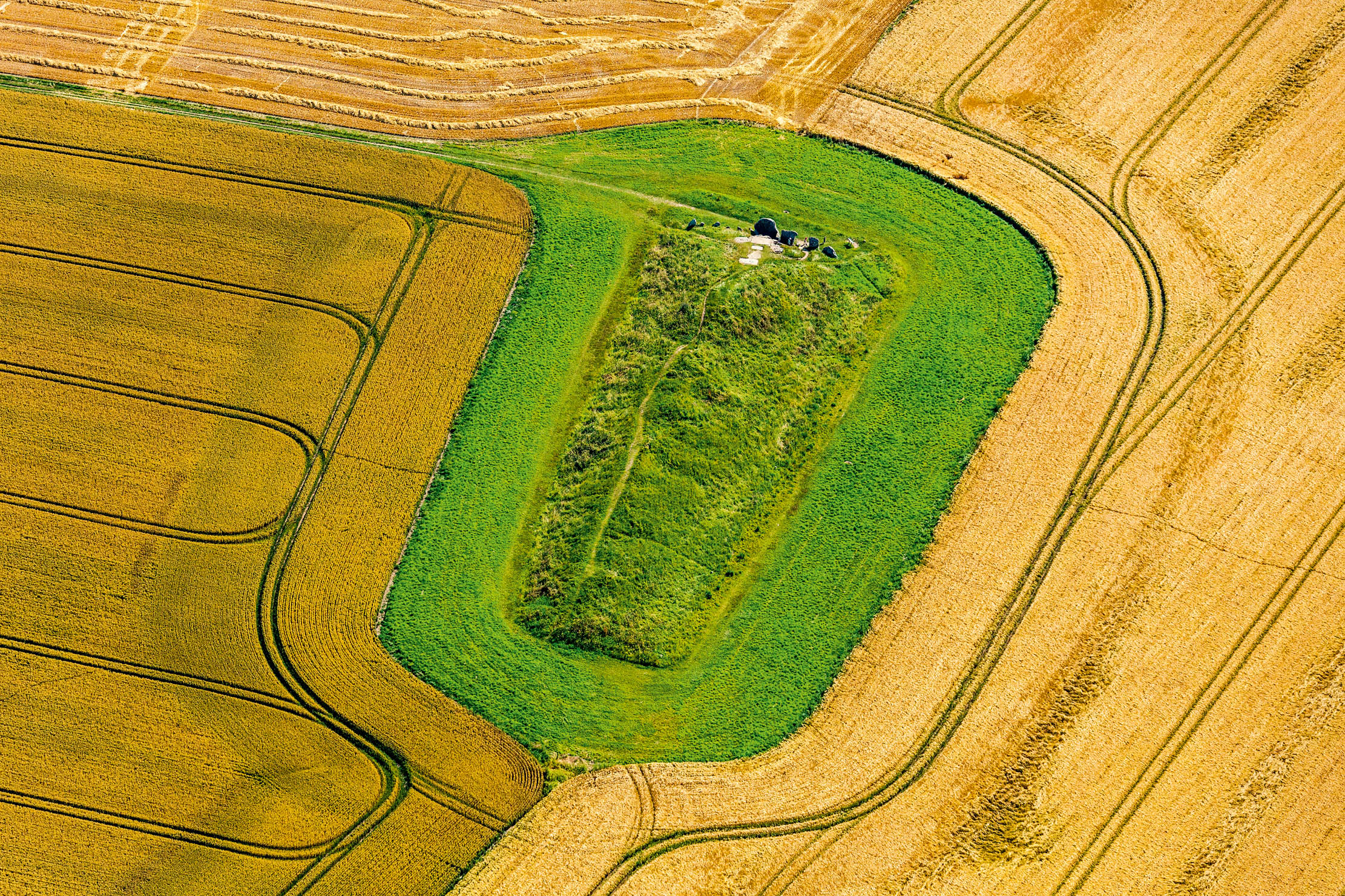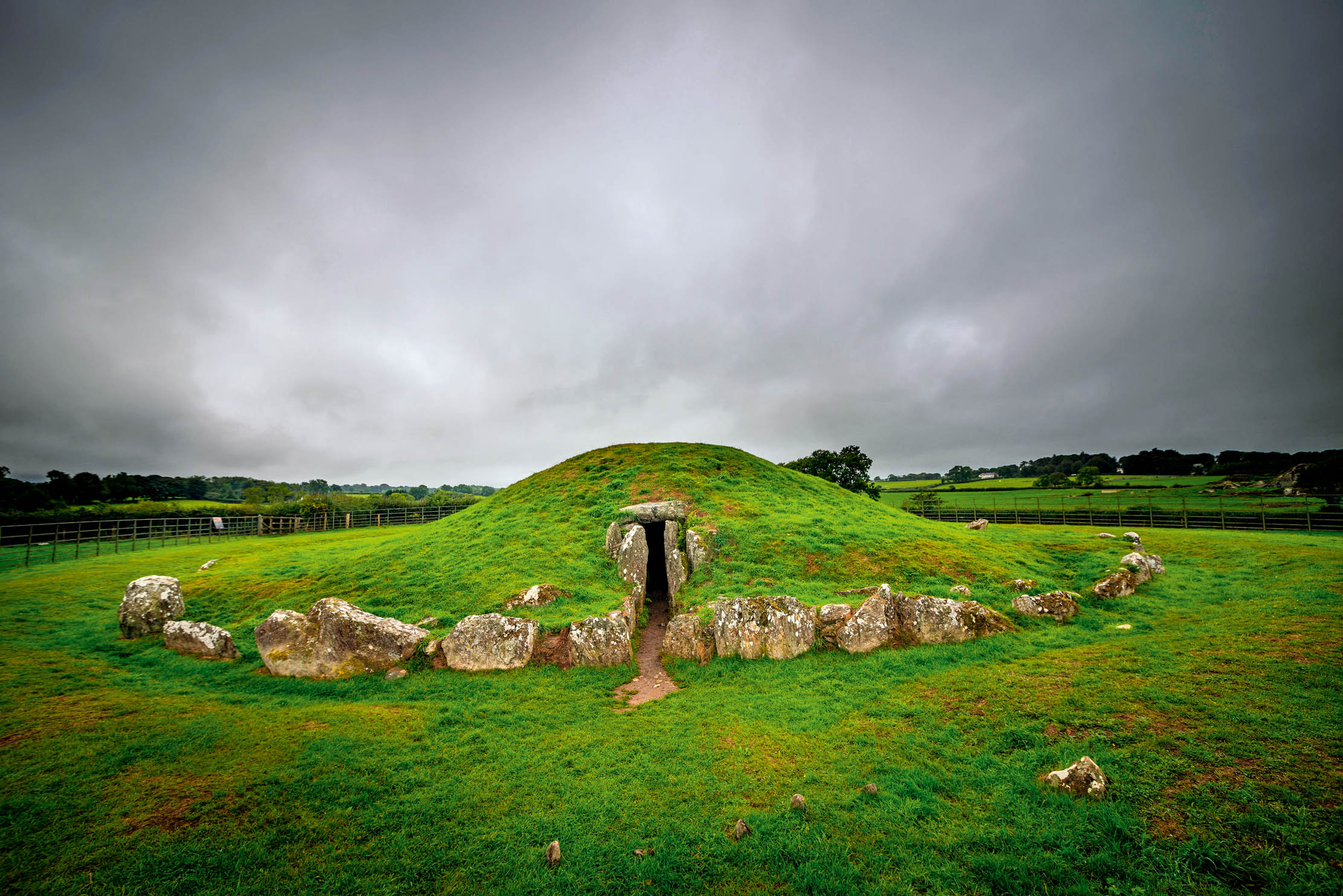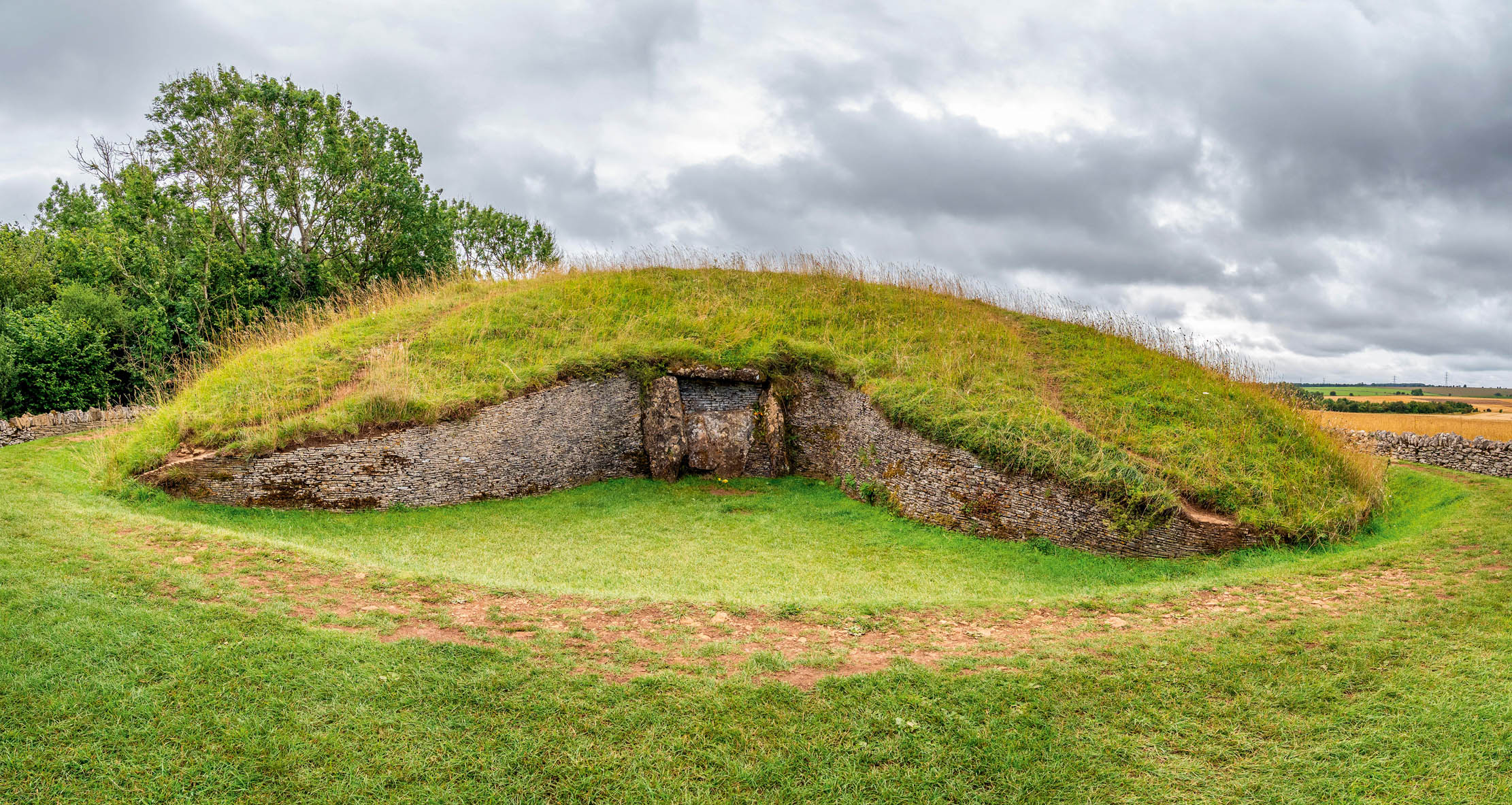Curious Questions: What is a barrow? The burial mounds that pre-date Stonehenge by seven centuries
Long or round, large or small, prehistoric tumuli dot the countryside. Vicky Liddell explores the history, folklore and literary influence of burial mounds or barrows and reveals how they were nearly lost to the 18th-century digging mania.


And one tree-crowned long barrow Stretched like a sow that has brought forth her farrow Hides a king’s bones Lying like broken sticks among the stones. — Andrew Young, ‘Wiltshire Downs’
Driving south on the A303 past Stonehenge, the crawling traffic affords travellers spectacular views of the ancient monument, but there are prehistoric riches on the other side of the road, too, in the form of dozens of bowl barrows which are spread out over Salisbury Plain like enormous, inverted green puddings. Marked on the Ordnance Survey map with the familiar gothic italic ‘tumulus’ or ‘tumuli’, they are some of about 20,000 sites of burial mounds or barrows scattered around Britain.
They fall into two main forms: the long barrow, which dates from the earliest Neolithic farming communities (3800BC–3500BC) and the later Bronze Age round barrow (2000BC– 1500BC) which is subdivided into five different shapes — bowl, bell, saucer, pond and the aesthetically pleasing disc barrow with its well-defined ditch and bank. Although older, the long barrow is the more complex, with passages and stone chambers that held the remains of up to 50 people. Rectangular or lozenge-shaped, these long mounds of earth are anywhere between 65ft and 394ft long and are thought to have been used as shrines for the living, as well as tombs for the dead.

Chambered long barrows are the oldest surviving monuments in Britain and their densest concentration is in the Cotswold hills and the Marlborough Downs, where more than 150 survive. Known as the Cotswold Severn group, they are typically trapezoidal in shape and located on prominent hills and slopes, where they may have served as a marker in the landscape along herding pathways. ‘They are impressive today,’ writes Timothy Darvill in his book, Long Barrows of the Cotswolds, ‘but when these sites were new, they were brutal and hard, bright white rocky mounds covering dark, dank shadowy chambers.’
Each long barrow contains the same three elements, comprising a forecourt, which may have been used for rituals, an entrance area and a passage leading into the mound with one or more cells leading off it. It was here that the disarticulated remains of men, women and children were placed, sometimes with the occasional pot and ornament. Excavations have shown that the barrows were opened from time to time for the addition of corpses and parts of bodies that had been stored elsewhere. ‘It must have been an emotionally charged, uncomfortable experience, squeezing into the narrow spaces, moving bones about and manoeuvring bodies into their new resting places,’ reflects Prof Darvill.

At Belas Knap, near Winchcombe, Gloucestershire, what appears to be the main entrance is a false one, which prehistorians think may have been intended as a ‘spirit door’ to allow the dead to come and go. By 3000BC, most long barrows had fallen out of use and were gradually abandoned and blocked up. Only West Kennet in Wiltshire, one of the longest barrows in the country, saw continued activity until about 2500BC.
Round barrows were simpler, often only a mound of earth over a single inhumation with a few grave goods in the Beaker style of early Bronze Age people — named for their distinctive bell-shaped drinking vessels — and occasionally no burial at all. Size varies from a barely discernible swelling in the ground to mounds in excess of 9ft, but by far the most common variety of round barrow is the bowl barrow, with an estimated 10,000 surviving examples across Britain, including the Shrewsbury Tumulus, which sits in a south London housing residential area. Isolated specimens can be seen in every parish and, in Wiltshire, they are often crowned with a copse of beech trees. Round barrows also appear in groups of 30 or more in what have come to be known as ‘barrow cemeteries’, such as the Winterbourne Poor Lot barrows in Dorset, a cemetery of 44 mounds dating from about 1500BC, which straddles the A35, and the mighty Kings Barrows, overlooking Stonehenge.
After the Bronze Age, burial mounds were never as numerous — the Iron Age people constructed square ones, into which they sometimes buried chariots, and the Romans made large conical ones such as the Bartlow Hills, known as the Pyramids of Essex. The Anglo Saxons of East Anglia raised barrows over ship burials, as at Sutton Hoo in Suffolk, and the Vikings built barrows as late as AD1000, but as Christianity took hold, resting places migrated to churchyards and tombs to churches.
Exquisite houses, the beauty of Nature, and how to get the most from your life, straight to your inbox.
Over millennia, few barrows have survived in an undamaged state and many have been levelled by agriculture and development — in Hampshire alone, it is estimated that 75% have been destroyed. The damage was exacerbated in the 18th and 19th centuries, when barrow digging became a field sport for country landowners and parsons eager to fill their cabinets of curiosities. They often worked at an astonishing speed: Bryan Faussett, a Kentish antiquary and collector, dug into nearly 800 barrows with a one-day record of 31 on July 29, 1771. Pottery was broken and bones pilfered and the Revd John Skinner, who opened up 26 barrows between 1815 and 1818, recorded a shameful picture of pick-axed urns broken by unsupervised workmen and sites trampled by stray sheep. The much desired ‘treasure’ was rarely found, but, in 1808, at one of the more orderly excavations, archaeologist William Cunnington, working for Sir Richard Colt Hoare, discovered a gold lozenge and several bronze daggers in the Bush Barrow near Stonehenge, which are now displayed at Wiltshire Museum in Devizes.

Unsurprisingly, prehistoric burial mounds have attracted a great deal of folklore. The Devil’s Jumps near Treyford in West Sussex, a group of five large, well-preserved bell barrows, are said to be where the devil jumped from hill to hill until the god Thor grew so enraged that he threw a stone causing him to flee. At the Culliford Tree Barrow in Dorset, also known as the Music Barrow, there is the belief that fairy music can be heard from beneath the mound by those who listen at the apex at midday. At Wayland’s Smithy in Oxfordshire, any horse left tethered at the long barrow with a coin would be shod by an invisible elvin smith. Placed strategically in a copse along the ancient ridgeway, Wayland’s Smithy was often visited by J. R. R. Tolkien, who incorporated the landscape into his ‘Lord of the Rings’ trilogy — the barrow is thought to have been the model for the Barrow Downs, where Frodo Baggins and the hobbits were captured by an evil barrow-wight. Barrows also feature in the Anglo-Saxon dragon-slaying epic Beowulf.
Secrets of the barrows are still being revealed and human bones collected have indicated that Neolithic humans had a protein-rich diet, but suffered from arthritis, tuberculosis and scurvy. In 2021, DNA analysis of bones and teeth from 35 bodies in the Hazleton North long barrow in the Cotswolds showed that 27 of them were biological relatives from five generations of one extended family, proving for the first time prehistoric man’s close connection with his immediate ancestors. The results have been described as the world’s oldest family tree and offer a glimpse into the lives of Britain’s first farmers, who lived in about 3700BC– 3600BC — 700 years before construction started on the great monument of Stonehenge.

Britain’s beguiling barrows
West Kennet Long Barrow, Avebury, Wiltshire
One of the largest and most accessible Neolithic chambered tombs with wonderful views over Silbury Hill and the surrounding countryside. Constructed in about 3650BC and used for another 1,000 years, the long barrow was found to contain the partial remains of at least 46 people with grave goods. Free access during daylight hours. Park on layby on A4.
Arthur’s Stone, Arthur’s Stone Lane, Dorstone, Herefordshire
A Neolithic chambered tomb on the ridge of a hill overlooking the Golden Valley, Arthur’s Stone is a northerly outlier of the Severn-Cotswold group. Linked to King Arthur since before the 13th century as the place where Arthur slew a giant. Open during daylight hours.
Coldrum Long Barrow, Trottiscliffe, West Malling, Kent
Sitting on a natural terrace overlooking farmland, Coldrum is the best-preserved example of an early Neolithic ‘Medway Megalith’ of the North Downs. Originally rectangular in shape, the tomb contained the bones of 22 related men, women and children, who were all buried elsewhere and then moved to Coldrum in about 3985BC. Free and open 24 hours.
Priddy Nine Barrow Cemetery, North Hill, Nine Barrows Lane, Priddy, Somerset
A group of nine Bronze Age round barrows, seven occurring in a line with two further mounds situated slightly to the north. Excavations in 1815 uncovered cremation burials and some grave goods, including bronze daggers. Follow the footpath from Priddy village green.
Bryn Celli Ddu Burial Chamber, Llanddaniel Fab, Llanfair, Gwynedd
One of Anglesey’s most famous prehistoric landmarks. As the sun rises at the summer solstice, a shaft of light shines directly down the tomb’s passageway, illuminating the chamber within. Open daily from 10am–4pm.
Vicky Liddell is a nature and countryside journalist from Hampshire who also runs a herb nursery.
